|
Know what’s happening across Oceania—before your coffee’s cold.
OCEANIA MARKETS
|
S&P/ASX 200
|
8,550.80
|
-0.10%
|
|
|
S&P/NZX 50 Index Gross
|
12,480.05
|
+0.15%
|
|
|
|
ASX 200 and NZX 50 Data Provided By:

|
|
*Market index data sourced from official exchange publications and financial data aggregators. ASX and NZX data reflect end-of-day figures from the Australian and New Zealand stock exchanges respectively. SPX (South Pacific Stock Exchange) figures reflect the most recent published data. Note: NZX and SPX figures include dividends (total return), while the ASX figure reflects share price movement only.
|
|
REGIONAL NEWS
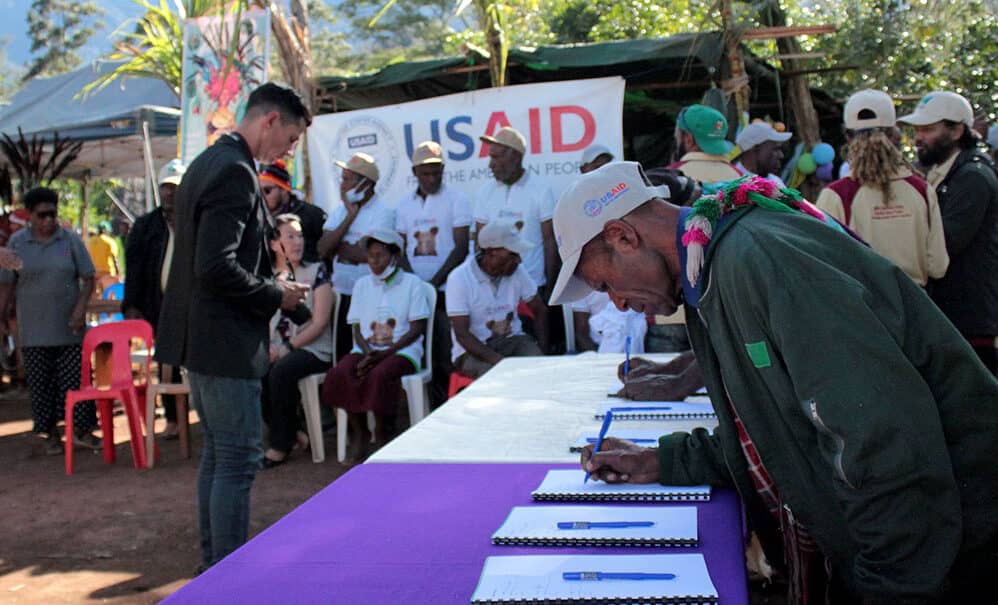
Pacific communities face uncertainty as US slashes vital development aid, risking health, climate, and infrastructure projects in a region caught between global powers. Photo Credit: (Facebook/USAID.PNGSIVAN)
US Aid Cuts Deepen Challenges for Pacific Island Nations Amid Strategic Rivalry
|
Pacific communities face uncertainty as US slashes vital development aid, risking health, climate, and infrastructure projects in a region caught between global powers. The recent drastic cuts to United States foreign aid, particularly through the downsizing of USAID, have sent shockwaves across Pacific Island nations, threatening critical development and health programs at a time when the region is highly vulnerable to climate change, disease, and economic instability. The Trump administration’s decision to freeze over 80% of USAID’s $42 billion budget has stalled projects ranging from HIV/AIDS prevention in Fiji and Papua New Guinea to marine conservation efforts in the Solomon Islands. Many local organisations have been forced to lay off staff and scramble for alternative funding, undermining years of progress and community trust in aid programs.
|
|
Pacific leaders have expressed deep concern about the sudden withdrawal of US support, which had been growing under the Biden administration’s first-ever US-Pacific Partnership Strategy. This strategy included commitments such as $60 million annually to the Forum Fisheries Agency and the relaunch of the Peace Corps in the region. The cuts come amid increasing geopolitical competition with China, which has been expanding its influence through diplomatic and security agreements with Pacific nations. Fiji’s Prime Minister Sitiveni Rabuka personally appealed to US officials to maintain aid programs, highlighting the importance of continued US engagement for regional stability and development.
|
|
While Australia and New Zealand remain key donors in the Pacific, experts warn that the US aid cuts risk leaving a significant gap in funding for essential services like health, climate resilience, and infrastructure. The region’s heavy dependence on foreign aid makes it vulnerable to such abrupt policy shifts, underscoring the urgent need for Pacific countries to build more sustainable, locally driven development models. Meanwhile, the US faces reputational damage in the Pacific, as communities remember the withdrawal during a critical period of need, even as other partners step in to fill the void.
|
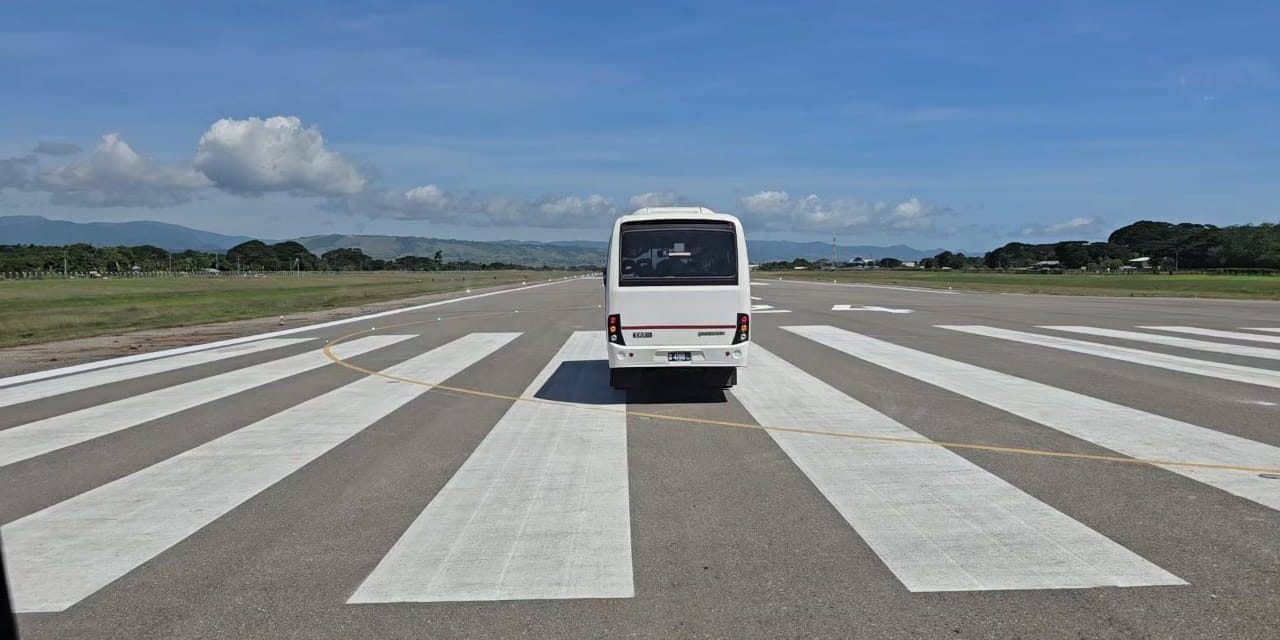
Proposed 800-metre runway extension at Honiara International Airport faces scrutiny over cost and timing amid calls to prioritize critical infrastructure projects. Photo credit: Solomon Star
Honiara Airport Extension Could Cost Half if Put to Public Tender, Sparking Debate on Priorities
|
The Solomon Islands government is negotiating a USD 60 million loan from China to fund an 800-metre extension of the runway at Honiara International Airport, formerly Henderson International Airport, to accommodate larger aircraft such as the Boeing 767. However, sources close to the project reveal that the extension could be built for about half the proposed cost if the government opts for a public tender process rather than awarding the contract directly. Three major Chinese state-owned enterprises—China Railway, China Harbour, and China Civil Engineering Construction Corporation (CCECC)—are competing for the project, with CCECC already known locally for major infrastructure works including the National Stadium and Munda Airport terminal.
|
|
While the government aims to prepare for future tourism growth through this expansion, critics question whether the runway extension is the right priority given the nation’s current economic and infrastructural challenges. Concerns have been raised about the Solomon Islands’ capacity to service such a large loan, even at concessional rates, and the readiness of the tourism sector, which currently lacks sufficient hotel rooms and amenities to handle increased arrivals. Instead, some experts and insiders advocate redirecting funds to critical road projects in Malaita and other provinces, which would unlock economic potential and improve access to essential services like health and education. They warn that locking in this loan could deepen the government’s financial crisis and delay other vital development initiatives.
|
|
Meanwhile, Honiara International Airport has recently seen significant upgrades funded by the World Bank under the Second Solomon Islands Roads and Aviation Project (SIRAP2), including runway resurfacing, airfield lighting, and the upcoming construction of a new Aviation Complex Building to boost operational efficiency and safety. These improvements mark important steps toward modernizing the airport infrastructure, but the debate over the runway extension highlights the ongoing challenge of balancing ambitious infrastructure projects with fiscal responsibility and broader development needs in the Solomon Islands.
|
PRESENTED BY VONU STUDIOS
Oceanian Animated Videos For Kids: Pawpaw Kids TV
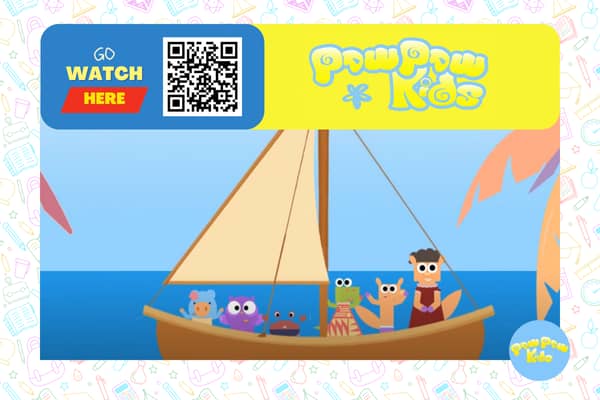
|
Pawpaw Kids TV is a YouTube channel dedicated to engaging and educational content for children, with a specific focus on the Oceanian region. The channel features the Pawpaw Explorers—Illy the Iguana, Mo the Mongoose, and other animated characters—who embark on adventures that introduce young viewers to local wildlife, ocean currents, and cultural stories.
|
Pawpaw Kids TV offers a Pacific blend of entertainment and learning, making it a valuable resource for children to explore the rich cultures and natural wonders of the Oceania region. Simply scan the QR code to visit the Pawpaw Kids TV YouTube channel or click this link:
YouTube Link: Pawpaw Kids TV
|
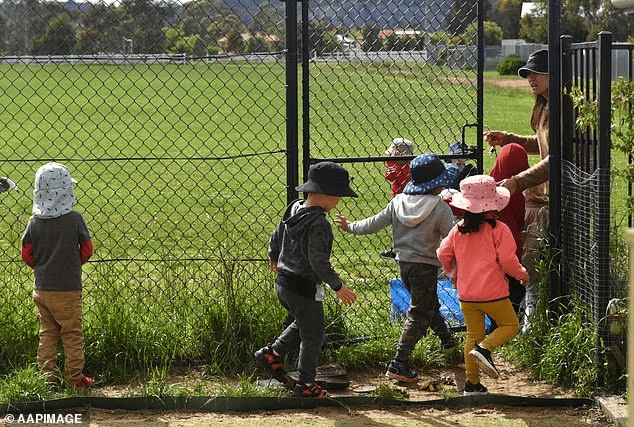
Allegations emerge of parents misrepresenting Indigenous heritage to access vaccination exemptions and benefits, threatening the integrity of targeted health initiatives for Aboriginal and Torres Strait Islander communities. Photo Credit: Daily Mail UK
Parents Falsely Claim Aboriginal Identity to Bypass Vaccination Rules, Undermining Indigenous Health Programs
|
A recent investigation has uncovered that some parents in Australia are allegedly falsifying their Aboriginal or Torres Strait Islander heritage to bypass vaccination requirements for their children. This practice reportedly aims to exploit exemptions and additional vaccination benefits available specifically to Aboriginal and Torres Strait Islander peoples under the National Immunisation Program. The program offers free vaccines and certain immunisation flexibilities to Indigenous Australians due to higher risks of some vaccine-preventable diseases in these communities. However, misrepresenting Indigenous identity to avoid standard vaccination rules undermines public health efforts and the integrity of targeted health programs.
|
|
Australia’s National Immunisation Program provides Aboriginal and Torres Strait Islander people with access to additional vaccines such as meningococcal B, pneumococcal, and influenza vaccines, often free of charge and at earlier ages than the general population. These measures address the disproportionate burden of infectious diseases in Indigenous communities and are part of broader strategies, including the National Immunisation Strategy 2025–2030, to close health gaps and improve outcomes. Medical exemptions are strictly regulated and require certification by qualified health professionals, ensuring that only valid health reasons justify exemption from vaccination. The misuse of Indigenous status to circumvent these rules not only risks children’s health but also threatens the trust and resources dedicated to Aboriginal and Torres Strait Islander health programs.
|
|
Health authorities emphasize the importance of maintaining the integrity of immunisation programs to protect vulnerable populations. The “No Jab, No Play” and “No Jab, No Pay” policies reinforce that vaccination objections are not valid exemptions for childcare or government benefits, underscoring the need for genuine medical reasons. The government continues to work closely with Aboriginal Community Controlled Health Organisations to deliver culturally appropriate vaccination services and education. Addressing fraudulent claims is critical to ensuring that Indigenous health initiatives remain effective and that all children receive the protection they need against preventable diseases.
|
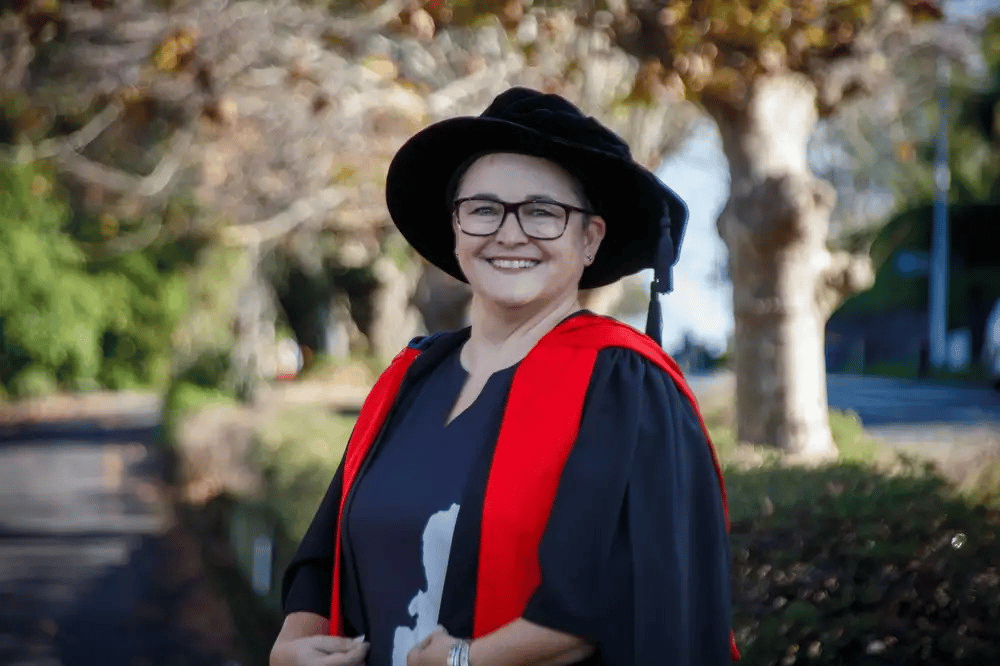
PhD study by Dr Lara Tookey at Massey University highlights how temperature and ventilation impact cognitive performance, urging schools to improve indoor air quality for better learning outcomes. Photo credit: Queensland National Parks
New Research in New Zealand Reveals Poor Classroom Air Quality Hampers Student Learning
| A recent PhD study by Dr Lara Tookey at Massey University has uncovered a strong link between classroom air quality and student cognitive performance in New Zealand primary schools. By measuring temperature and carbon dioxide (CO₂) levels across multiple schools and seasons, Dr Tookey found that students performed significantly better on concentration, reasoning, and memory tests when classrooms maintained comfortable temperatures and fresh air. Conversely, high CO₂ levels and uncomfortable temperatures—either too hot or too cold—negatively affected students’ ability to think clearly, underscoring the importance of well-ventilated, thermally comfortable learning environments.
|
|
Dr Tookey’s research also revealed concerning trends in ventilation practices, with only 30% of teachers in Auckland regularly opening windows during lessons, a decline from 40% in 2015. She recommends practical steps such as improving natural ventilation by opening windows, enhancing insulation to reduce temperature swings, and installing effective heating and cooling systems. Continuous monitoring of CO₂ and temperature could empower schools to maintain optimal classroom conditions. Additionally, her findings suggest scheduling cognitively demanding tasks in the afternoon when students tend to perform better, though this must be balanced against potential fatigue.
|
|
These insights have important implications for future classroom design and policy development. Architects and engineers can prioritize natural ventilation and thermal comfort in new builds, while policymakers might establish standards for indoor air quality and temperature in schools. Dr Tookey emphasizes the need for collaboration among teachers, students, and school leadership to implement these changes and create healthier, more productive learning spaces. Her work offers a clear pathway to enhancing student wellbeing and academic success through simple, evidence-based environmental improvements.
|

Julie Inman Grant calls for removal of YouTube exemption amid concerns over harmful content and persuasive algorithms targeting children. Photo credit: Bandt
Australia’s eSafety Commissioner Urges Inclusion of YouTube in Under-16 Social Media Ban
|
Australia’s eSafety Commissioner, Julie Inman Grant, has strongly recommended that YouTube be included in the federal government’s upcoming social media ban for children under 16. The Social Media Minimum Age Bill, set to take effect in December 2025, currently bans platforms like TikTok, Instagram, Facebook, Snapchat, Reddit, and X for under-16s, but YouTube was initially exempted due to its educational content. Inman Grant argues that this exemption is inconsistent with the law’s purpose, highlighting research showing that 37% of young people have encountered harmful content on YouTube—the highest rate among all platforms—and warning that its persuasive design features, such as autoplay and algorithmic recommendations, expose children to violent, misogynistic, and other damaging material.
|
|
The commissioner’s call comes amid growing scrutiny of YouTube’s moderation practices, with reports indicating that the platform has scaled back content moderation, allowing more harmful videos to remain accessible. Inman Grant emphasized that YouTube’s functionality closely resembles other social media platforms, employing infinite scroll and personalized feeds that keep users engaged and vulnerable to “rabbit hole” effects. She advised Communications Minister Anika Wells
to reconsider the exemption, stating that no platform should be singled out given the dynamic nature of online risks and harms. YouTube Australia and New Zealand has pushed back, arguing that eSafety’s position contradicts government commitments and community research.
|
|
The government is currently reviewing the advice as it finalizes the legislation, which carries penalties of up to $50 million for non-compliant platforms. The move to potentially include YouTube reflects a shift in policy amid rising concerns about children’s online safety, especially as screen time and exposure to harmful content increase. Experts note that the ban alone will not address emerging threats such as generative artificial intelligence, underscoring the need for ongoing vigilance and adaptive regulation to protect young users in an evolving digital landscape.
|
Fiji Airways Falls to 31st in 2025 Skytrax Rankings, Losing Regional Top Spot
|
Fiji Airways experienced a significant decline in the 2025 Skytrax World Airline Awards, falling from 14th place in 2024 to 31st this year. This drop marks a notable setback for the national carrier, which had previously been celebrated for its exceptional service and strong global standing. Regionally, Fiji Airways also lost its number one position in the Best Airline in Australia/Pacific category, slipping to third place behind Qantas, which now leads the region, and Air New Zealand in second. The Skytrax Awards, based on extensive passenger feedback, remain one of the most respected benchmarks in the aviation industry, making this decline a cause for concern among stakeholders.
|
|
The fall in rankings comes after a period of impressive growth and recognition for Fiji Airways, which in 2023 and 2024 had climbed steadily in the global top 100 airlines and won multiple regional awards, including Best Airline Staff in Australia and the Pacific for four consecutive years. CEO André Viljoen had attributed past successes to the airline’s commitment to the “Fijian spirit of hospitality and care,” which resonated strongly with passengers. However, recent challenges, including increased competition and evolving passenger expectations, may have contributed to the slip in satisfaction scores that underpin the Skytrax rankings.
|
OCEANIAN MAKING WAVES
Tongan-Australian Author Winnie Dunn Shines on Miles Franklin Shortlist

Dunn’s debut novel celebrates Tongan heritage and Western Sydney life, marking a powerful moment for Pacific voices in Australian literature. Photo Credit: The Guardian/Sandhya Dusk Devi Nand
|
Western Sydney writer Winnie Dunn has been shortlisted for the prestigious 2025 Miles Franklin Literary Award for her debut novel, Dirt Poor Islanders. Dunn, who describes herself as “so humbled” by the recognition, joins a field of six authors vying for Australia’s most significant literary prize, which carries a $60,000 award for the winner. Her novel, published by Hachette Australia, stands out as one of three debut works among this year’s finalists, highlighting the increasing prominence of new voices in Australian literature.
|
|
The Miles Franklin Literary Award, established in 1957, is renowned for honouring works that present Australian life in any of its phases and are of the highest literary merit. This year’s shortlist, selected by a panel of distinguished judges, was praised for “writing that refuses to compromise,” with each novel said to “vitalise the form of the novel and invent new languages for the Australian experience.” Alongside Dunn’s Dirt Poor Islanders, the shortlist features Chinese Postman by Brian Castro, Theory & Practice by Michelle de Kretser, Compassion by Julie Janson, Ghost Cities by Siang Lu, and Highway 13 by Fiona McFarlane. Each shortlisted author receives $5,000, with the overall winner to be announced on 24 July 2025.
|
|
Dunn’s nomination is seen as a significant milestone for Western Sydney’s literary community, reflecting the region’s growing influence on the national stage. The Copyright Agency’s CEO, Josephine Johnston, commended this year’s shortlist for showcasing “the extraordinary breadth of Australian storytelling” and for reflecting “the richness and diversity of voices shaping our literary landscape.” As anticipation builds for the winner announcement, a live panel event featuring three shortlisted authors will take place on 2 July at Gleebooks, offering readers a chance to engage with some of the country’s most compelling contemporary writers.
|
SPOTLIGHT

The new eTransport app is at the centre of growing public frustration over device compatibility, limited MP-PAiSA integration, and system failures that have left many commuters behind. Photo credit: Vodafone Fiji Google Play
WHEN DIGITAL PROGRESS LEAVES PEOPLE BEHIND
|
Fiji's Prime Minister Sitiveni Rabuka's blunt statement says it all: "I don't care who runs it – just fix e-ticketing." His frustration mirrors that of thousands of Fijians struggling with Vodafone Fiji's new eTransport card system, prompting calls to open the market to multiple suppliers. “If Fiji’s digital leap leaves its people behind, it isn’t progress—it’s a problem.” His words didn’t mince any meaning—and for thousands of users grappling with the brand-new eTransport card, they struck a chord.
|
The Promise Behind eTransport
| Fiji's electronic ticketing system was designed with ambitious goals: improved revenue collection, greater transparency in subsidies, faster transactions without cash handling, and richer data for better decision-making. The system supports over 1,470 buses serving 870,000+ Fijians, including 210,000 students and 50,000 senior citizens who rely heavily on public transport. Originally introduced in 2017, the system was meant to replace cash-based fare collection and streamline government subsidies worth millions of dollars annually.
|
Why the New System?
|
The recent upgrade aimed to address limitations of the original system and introduce enhanced features:
Mobile app integration for easier top-ups and balance management
NFC smartphone compatibility for tech-savvy users
Offline capabilities to prevent network-related disruptions
QR Pay options planned for the future
Better tracking of concessional fares for students and seniors
|
Digital Divide: Who Gets Left Behind
| The most glaring issue is device compatibility. Vodafone acknowledges that the eTransport app requires Android 9.0 or higher with NFC capability, effectively excluding many smartphone users. iPhone users face particular challenges since iOS restricts NFC access for third-party apps like eTransport. While iPhone users can work around this by registering their card with someone's compatible Android phone and double-tapping the card at the back of the phone to redeem balances, this creates an inconvenient dependency on others. This has sparked controversy, with some suggesting Vodafone's position dismisses iPhone users as non-bus commuters – a claim that ignores the reality that many iPhone users, including working professionals and students, rely on public transport daily.
|
Systemic Problems Plague Rollout
| Beyond device compatibility, widespread operational issues have frustrated commuters:
|
|
Network Infrastructure Failures: Major connectivity problems have repeatedly left hundreds unable to top up cards, with some Vodafone outlets forced to close while customers waited in queues. The company has since introduced offline EFTPOS capabilities, but damage to public confidence persists.
|
|
Balance Transfer Problems: Despite promises to transfer old card balances to new ones, many users report failed transfers, losing money already topped up on their old cards.
|
|
Confusing User Experience: The integration between the eTransport app and M-PAiSA payment system has created confusion, with users initially told they needed two separate apps before Vodafone clarified that M-PAiSA works as a payment method within the main app.
|
|
Inadequate Agent Network: Many community top-up agents remain unequipped with updated systems, forcing users to travel to official outlets for basic services that should be available locally.
|
|
Staff Training Gaps: Reports of untrained bus drivers and booth operators unable to properly handle the new system have left passengers stranded between conflicting instructions.
|
The Path Forward
|
Deputy PM Manoa Kamikamica has met with Vodafone executives promising stronger oversight, while the company has extended the upgrade deadline to July 15. However, the PM's call to "cast the net wider" suggests more fundamental changes may be needed – possibly opening the market to competitors who can better serve all Fijians regardless of their device preferences.
|
|
The eTransport debacle reveals deeper issues with how digital transformation is being implemented in Fiji. When a government-mandated system fails to work reliably – from network outages to balance transfers, from inadequate infrastructure to poor training – it becomes a barrier rather than a bridge to progress. The problem isn't just about device compatibility or technical knowledge; it's about rolling out systems before they're ready, without adequate testing, infrastructure, or alternatives for when things go wrong. True digital transformation requires robust systems that serve everyone, not rushed implementations that leave citizens frustrated and stranded.
|
SPORTS
Zoe Hobbs Shatters Oceania 100m Record with 10.94 Seconds at Ostrava Golden Spike

New Zealand sprinter Zoe Hobbs sets a new Oceania record in the 100m, finishing third at a major international meet in the Czech Republic. Photo Credit: PHOTOSPORT
|
New Zealand sprinter Zoe Hobbs
has once again broken the Oceania and national 100m record, clocking an impressive 10.94 seconds at the prestigious Ostrava Golden Spike event in the Czech Republic. The 27-year-old improved on her previous record of 10.96 seconds set in Switzerland last year, securing a strong third-place finish in a highly competitive field. Hobbs described her race as a near stumble off the blocks but praised her ability to maintain momentum and flow through the sprint, reflecting her consistent training and rising form over recent weeks.
|
|
Hobbs’ performance marks a significant comeback and progression since earlier this year, when she ran 11.42 seconds in Poland and faced challenges adapting to international travel and competition. Her recent streak of strong results, including a reassuring run in Finland, has boosted her confidence and momentum heading into major upcoming events. The Ostrava race featured top sprinters such as Liberia’s Thelma Davies, who won with a national record of 10.91 seconds, and Ivory Coast’s Marie Josée Ta Lou-Smith, who finished second with a season-best 10.92 seconds.
|
REGIONAL EVENTS
-
Pacific Mini Games 2025
| Event |
Date |
Location |
Details |
| Opening Ceremony |
Sunday, 29 June 2025 |
Koror, Palau |
Colorful celebration marking the start of the Pacific Mini Games. |
| Competitions |
30 June – 9 July 2025
Rest Day: 6 July
|
Various venues in Koror, Airai, Melekeok, Ngiwal |
Sports include Athletics, Baseball, Triathlon, Swimming, Weightlifting, Judo, Wrestling, Table Tennis, Va‘a, Beach & Indoor Volleyball, Softball, and Archery.
|
| PGC General Meeting |
Sunday, 6 July 2025 |
Koror, Palau |
Meeting of the Pacific Games Council during the competition period. |
| Closing Ceremony |
Wednesday, 9 July 2025 |
Koror, Palau |
Final event including medal celebrations and cultural performances. |
|
|
